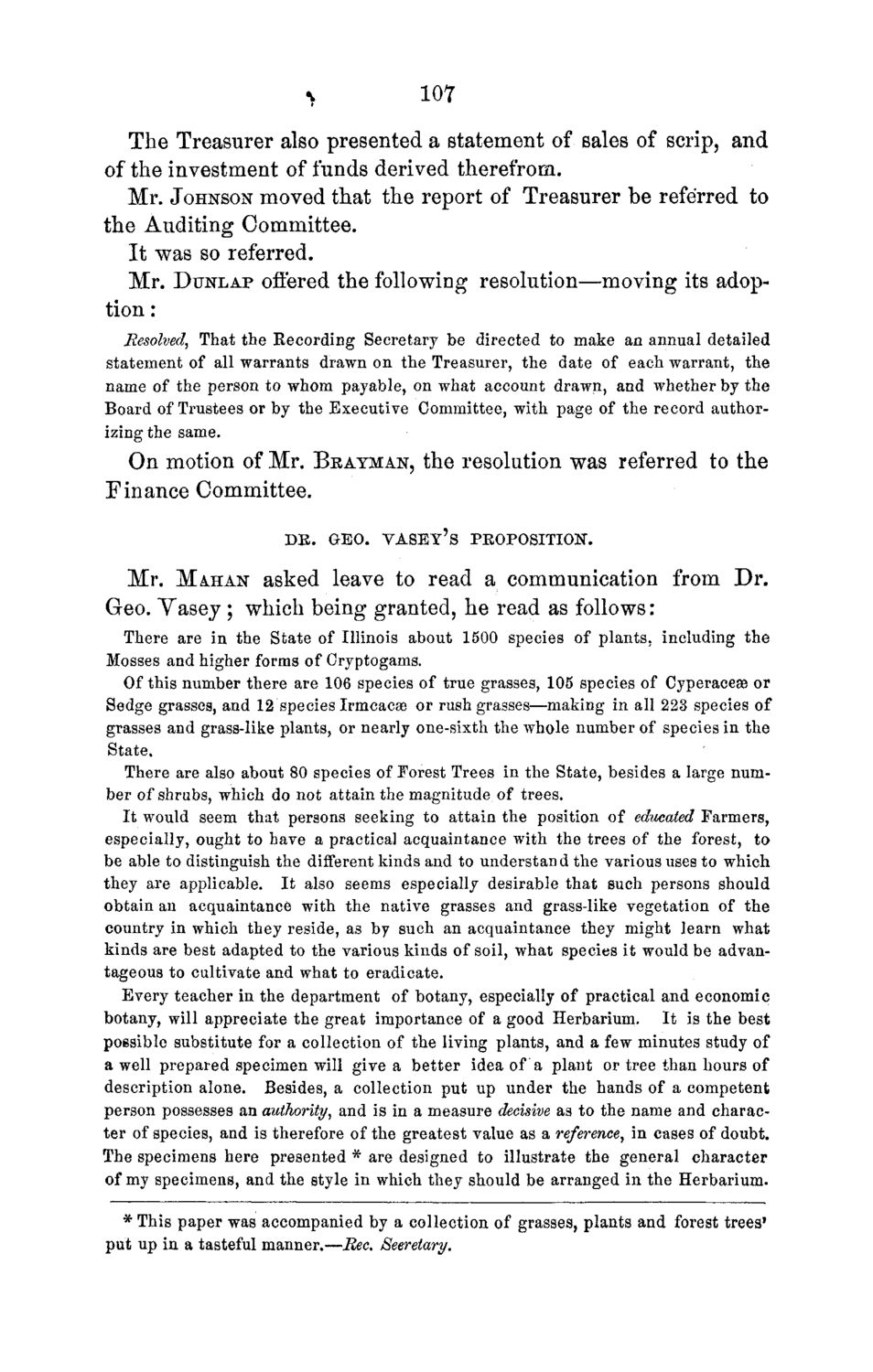| |
| |
Caption: Board of Trustees Minutes - 1868
This is a reduced-resolution page image for fast online browsing.

EXTRACTED TEXT FROM PAGE:
107 The Treasurer also presented a statement of sales of scrip, and of the investment of funds derived therefrom. Mr. JOHNSON moved that the report of Treasurer be referred to the Auditing Committee. It was so referred. Mr. DUNLAP offered the following resolution—moving its adoption : Resolved, That the Recording Secretary be directed to make an annual detailed statement of all warrants drawn on the Treasurer, the date of each warrant, the name of the person to whom payable, on what account drawn, and whether by the Board of Trustees or by the Executive Committee, with page of the record authorizing the same. On motion of Mr. BRAYMAN, the resolution was referred to the Finance Committee. DR. GEO. VASEY'S PROPOSITION. Mr. MAHAN asked leave to read a communication from Dr. Geo. Yasey ; which being granted, he read as follows: There are in the State of Illinois about 1500 species of plants, including the Mosses and higher forms of Cryptogams. Of this number there are 106 species of true grasses, 105 species of Cyperaceae or Sedge grasses, and 12 species Irmcaese or rush grasses—making in all 223 species of grasses and grass-like plants, or nearly one-sixth the whole number of species in the State. There are also about 80 species of Forest Trees in the State, besides a large number of shrubs, which do not attain the magnitude of trees. It would seem that persons seeking to attain the position of educated Farmers, especially, ought to have a practical acquaintance with the trees of the forest, to be able to distinguish the different kinds and to understand the various uses to which they are applicable. It also seems especially desirable that such persons should obtain an acquaintance with the native grasses and grass-like vegetation of the country in which they reside, as by such an acquaintance they might learn what kinds are best adapted to the various kinds of soil, what species it would be advantageous to cultivate and what to eradicate. Every teacher in the department of botany, especially of practical and economic botany, will appreciate the great importance of a good Herbarium. It is the best possible substitute for a collection of the living plants, and a few minutes study of a well prepared specimen will give a better idea of a plant or tree than hours of description alone. Besides, a collection put up under the hands of a competent person possesses an authority, and is in a measure decisive as to the name and character of species, and is therefore of the greatest value as a reference, in cases of doubt. The specimens here presented * are designed to illustrate the general character of my specimens, and the style in which they should be arranged in the Herbarium. * This paper was accompanied by a collection of grasses, plants and forest trees1 put up in a tasteful manner.—Rec. Seeretary.
| |